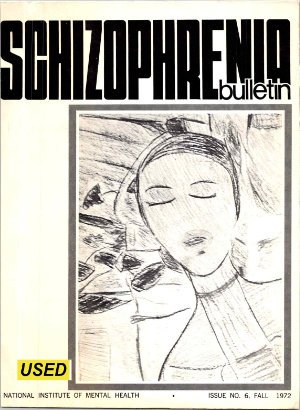Editor-in-Chief, Loren R. Mosher,.
This is the sixth experimental issue of the Schizophrenia Bulletin (previous issues were dated December 1969, Fall 1970, Winter 1970, Fall 1971, and Spring 1972). The Bulletin is prepared jointly by the Center for Studies of Schizophrenia and the National Clearinghouse for Mental Health Information, both in the National Institute of Mental Health. Its purpose is to facilitate the dissemination and exchange of information about schizophrenia and to provide abstracts of the recent literature on the subject. Material contained in the Bulletin, including viewpoints expressed by NIMH staff members, does not necessarily reflect the opinions, official policy, or position of the National Institute of Mental Health.
Rockville MD. Center for Studies of Schizophrenia National Institute of Mental Health. Issue 6. Fall. 1972





















